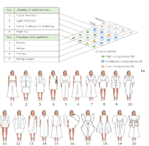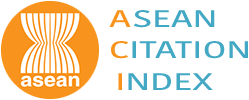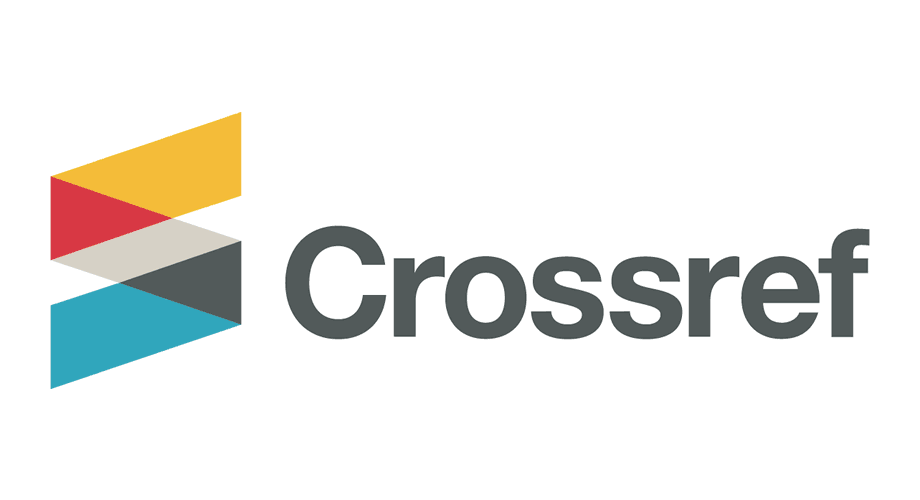The Design and Development of Community Textile Products from Banana Fiber Blends as Commercial Prototypes
DOI:
https://doi.org/10.57260/csdj.2025.273272Keywords:
Banana fiber, Products from banana fiber, Commercial textile prototypes, Hand woven fabric, Development of community textileAbstract
This research is predicated on the imperative to enhance the economic value of indigenous materials, specifically banana fiber, through the integration and development of community-based textile products with potential for commercial scalability. The objective of this research was to develop community textile products from banana fiber blends as commercial prototypes. The creation was divided into two parts: the creation of textile designs and the development of textile product prototypes from the needs of 400 working-age consumers aged between 25 and 45 years. The findings revealed that the yarn blend with banana fiber using a blend ratio of cotton, banana fiber, and Eri silk (70:20:10), spun in OE Spinning, yarn size 10/1, when used to create woven fabric patterns using the Kite technique resulted in new designs inspired by parts of a banana tree, which included designs based on banana blossom tops, banana fibrous layers, and banana blossoms. These developed designs could be applied to create textile fabrics with other techniques at the community level. When the developed textile was made into 10 daily wearable prototypes, the acceptance of the products by the consumers was at a good level. The overall mean acceptance score of 4.70, which was higher than the predetermined criterion of 4.00. Therefore, developing a prototype community textile product from banana fiber blend to commercial scale is the new body of knowledge that the community can use, develop, and expand its textile product in the future.
Downloads
References
Agnoli, S., Corazza, G. E., & Runco, M. A. (2016). Estimating creativity with a multiple measurement approach within scientific and artistic domains. Creativity Research Journal, 28(2), 171-176. Retrieved from https://psycnet.apa.org/record/2016-26953-008 DOI: https://doi.org/10.1080/10400419.2016.1162475
Community Development Department. (2024). CDD Big Data. Retrieved from https://bigdata.cdd.go.th/
Corazza, G. E., & Glăveanu, V. P. (2020). Potential in creativity: Individual, social, material perspectives, and a dynamic integrative framework. Creativity Research Journal, 32(1), 1-11. Retrieved from https://www.tandfonline.com/doi/full/10.1080/10400419.2020.1712161 DOI: https://doi.org/10.1080/10400419.2020.1712161
Franch, R. R. (2005). Bast and other plant fibres. Cornwall: Woodhead Publishing Limited and CRC Press LLC. DOI: https://doi.org/10.1533/9781845690618
Hambling, B., & Goethem, P. (2013). User acceptance testing a step-by-step guide. BCS Learning and Development.
Inpakdee, C., Boonyanate, P., & Bidahok, P. (2022). The Development of Wicker Products from Gros Michel Banana Fibers with Natural Dyes for Promote Career Among the Elderly. Rajabhat Chiang Mai Research Journal, 23(3), 222-236. Retrieved from https://so05.tci-thaijo.org/index.php/cmruresearch/article/view/253998/176482 DOI: https://doi.org/10.57260/rcmrj.2022.253998
Pappu, A., Patil, V., Jain, S., Mahindrakar, A., Haque, R., & Thakur, V. K. (2015). Advances in industrial prospective of cellulosic macromolecules enriched banana biofiber resources: A review. International Journal of Biological Macromolecules, 79(15), 449-458. Retrieved from https://www.sciencedirect.com/science/article/abs/pii/S0141813015003414 DOI: https://doi.org/10.1016/j.ijbiomac.2015.05.013
Sarkar, P. (2015). Garment manufacturing: Processes, practices and technology. Gurgaon: Mudranik Technologies Pvt. Ltd.
Sodhi, S., Singh, V., & Arya, N. (2022). Banana Fiber-An Eco-Friendly Textile. Vigyan Varta, 3(4), 135-136. Retrieved from https://vigyanvarta.com/adminpanel/upload_doc/VV_0422_35.pdf
Soodsang, N. (2015). Research methodology in designs. Bangkok: Odeon store.
Thai Textile Institute. (2024). Textile and clothing industrial situation (January 2024). Retrieved from https://www.thaitextile.org/th/insign/detail.3933.1.0.html
TNN Online. (2023). "Thai bananas" one of the most popular fruits with high prices, they are an important economic fruit with the highest number of exports. Retrieved from https://www.tnnthailand.com/news/infographic/150930/
Ulrich, K., & Eppinger, S. D. (2012). Product Design and Development. (5th ed.). McGraw-Hill.
Unal, F., Avinc, O., Kumartasli, A., & Yavas, A. (2021). The use of banana fibers in composite materials. 12th International Scientific-Professional Conference. 48-55. Retrieved from https://www.researchgate.net/publication/357026882_THE_USE_OF_BANANA_FIBERS_IN_COMPOSITE_MATERIALS
Zou, Y., Pintong, S., Shen, T., & Luh, D. (2022). Evaluation and trend of fashion design research: Visualization analysis based on CiteSpace. Fashion and Textiles, 9(1), 45. Retrieved from https://link.springer.com/article/10.1186/s40691-022-00316-6 DOI: https://doi.org/10.1186/s40691-022-00316-6

Downloads
Published
How to Cite
Issue
Section
Categories
License
Copyright (c) 2025 Community and Social Development Journal

This work is licensed under a Creative Commons Attribution-NonCommercial-NoDerivatives 4.0 International License.
1. Articles, information, content, images, etc published in the “Community and Social Development Journal” are copyrighted by the Community and Social Development Journal, Chiang Mai Rajabhat University. In order to properly distribute the articles through print and electronic media, the authors still hold the copyright for the published articles under the Creative Commons Attribution (CC BY) license, which allows the re-distribution of the articles in other sources. References must be made to the articles in the journal. The authors are responsible for requesting permission to reproduce copyrighted content from other sources.
2. The content of the articles appearing in the journal is the direct responsibility of the article authors. The editorial board of the journal does not necessarily agree with or share any responsibility.













